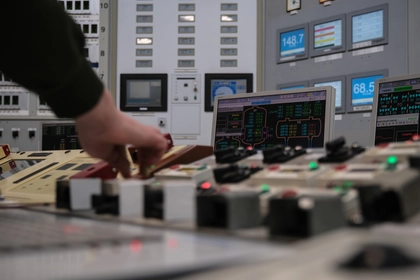Verkhovna Rada Deputy Oleksiy Honcharenko has reported on Telegram a surge in complaints about professional medics being transferred from military hospitals to combat infantry roles.
“What the f**k! Once again: people who save the lives of our military, performing complex surgeries daily, are being reassigned to assault troops,” he wrote.
JOIN US ON TELEGRAM
Follow our coverage of the war on the @Kyivpost_official.
Honcharenko, an ally of former President Petro Poroshenko, accused Ukrainian authorities of a complete failure in mobilization efforts: “You’re using outdated Soviet methods for mobilization, sending medical specialists to the infantry without proper training instead of recruiting trained personnel.”
He also added that meanwhile, experienced combat veterans are reportedly working in Territorial Recruitment Centers (TRCs) “sorting through papers.”
“Medics are more than combat units; they’re the first line of aid and a vital chance for survival for every soldier,” Honcharenko said.
Ukrainian parliamentarians are considering dissolving the TRCs amid several scandals, including allegations of abuse of power and “basification,” a term used for the practice of detaining men on the street, placing them into buses, and transporting them to mobilization centers with a one-way ticket to training grounds.
According to the TSN outlet, lawmaker Yulia Yatsyk announced plans to disband the TRC and form over 10 brigades for the Armed Forces of Ukraine (AFU) from its employees.

IMF Approves $1.1 Billion Loan Disbursement to Ukraine Before Trump Inauguration
Honcharenko was one of the signers of the resolution to dissolve the TRC during a session of the Verkhovna Rada’s Temporary Investigative Commission, suggesting that TRCs be replaced by civilian-staffed recruitment centers, while experienced combat personnel are reassigned to operational roles.
As previously reported by Kyiv Post, citing Financial Times (FT), Ukraine faces an ongoing manpower crisis as troops along the 1,000-kilometer (621-mile) front grapple with continuous Russian air and ground attacks. Major General Dmytro Marchenko stated that the eastern front is “crumbling” due to shortages of both ammunition and personnel.
“People are very exhausted. They simply cannot hold the fronts they are on,” he said.
Two commanders on the eastern front told FT that skilled personnel, including medics, have at times been reassigned to infantry roles. “War requires these things sometimes,” one commander said. “I’ve sent my cooks to the trenches before.”
To fill manpower shortages, some infantry units have reportedly been reinforced with air force pilots, engineers, medics, and surgeons, according to Mariana Bezuhla, a member of Verkhovna Rada’s foreign policy committee.
Colonel Yuriy Ihnat, a senior Air Force official, stated earlier this month that some Air Force personnel had indeed been assigned to frontline units in response to the situation’s urgency. However, a Ukrainian army spokesperson denied these claims, clarifying that Ihnat had “misspoken.”
“Air Force units, including engineers, pilots, maintenance staff, and medical teams, remain in their specialized roles,” the spokesperson said, adding that more medics are being deployed to “stabilization points” near the frontlines in anticipation of increased fighting and casualties.
According to FT, both commanders and analysts agree that a lack of manpower, particularly infantry, is Ukraine’s most pressing challenge. While plans to draft an additional 160,000 troops by February are underway, experts predict they may only reach 100,000 – a number that covers only half of the current shortfall.
Efforts to recruit are also stymied by open-ended service terms. One senior soldier said: “A lot of guys now see mobilization as a death sentence.”
Stanislav Aseyev, a prominent Ukrainian journalist-turned-soldier, cautioned that “without clear policies on service duration and training quality, new recruits will be as demoralized and ineffective as the current battle-worn infantry.”
Franz-Stefan Gady, a military analyst and fellow at the International Institute for Strategic Studies in London who recently visited Ukraine, commented on the strain: “The average age is already above 40 in various brigades, and there doesn’t seem to be enough reinforcements arriving on the frontline.”
Several MPs, including Solomiya Bobrovska from the parliamentary committee on national security, defense, and intelligence, have noted a decrease in Ukraine’s mobilization rate.
People’s Deputy Roman Kostenko, Secretary of the Parliament’s Committee on National Security, reported that the AFU need to mobilize 500,000 people, highlighting that the planned recruitment of 200,000 conscripts would be insufficient to meet the army’s needs at the front.
However, as per reports from multiple Russian pro-war Telegram channels, experienced UAV operators are being reassigned from drone units to frontline assault squads, a decision met with criticism among military bloggers or Z-bloggers.
Roman Saponkov, a military Z-correspondent, condemned the shift, saying that skilled drone operators, supported by private sponsorship, are now forced into direct combat roles, which has led to higher casualties.
Z-blogger Alexey Zhivov attributed this move to the growing number of unofficial units in the Russian military, which has led to the reshuffling of personnel to reinforce assault capabilities. He noted that “battalions are being ‘shaken up’ to support assault forces.”
Military commentator Vladislav Shurygin highlighted the issue, saying, “There are so many ad hoc units that soon no one will be left to fight… Whether it’s UAV operators, communication teams, or logistics crews,” adding that in a company of 90, “only 20 are ready for assaults.”
You can also highlight the text and press Ctrl + Enter






